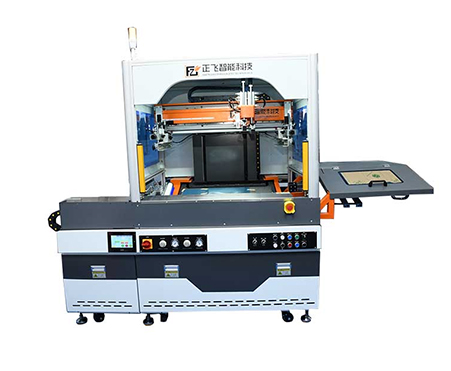In the field of industrial printing, automatic screen printing machines have become the mainstream equipment for flat printing due to their high precision, high efficiency, and automation advantages. However, as market demand develops towards personalization and complexity, the demand for printing curved surfaces and irregularly shaped workpieces is gradually increasing. This article will systematically analyze the support capability of automatic screen printing machines for curved surface printing from the aspects of technical principles, equipment types, key technical points, and application cases.1、 The Technical Principles and Challenges of Surface PrintingTraditional flat screen printing uses a scraper to squeeze ink through the screen, forming patterns on flat substrates. And surface printing needs to adapt to the curvature of the object's surface, and its core challenge lies in:

Contact uniformity: The contact pressure between each point on the curved surface and the screen must be consistent, otherwise it may lead to uneven ink distribution.Dynamic positioning: When the substrate rotates or moves, the position and angle of the screen need to be adjusted in real time to ensure pattern alignment.Ink adaptability: Curved printing requires ink with higher fluidity and adhesion to avoid defects caused by gravity or centrifugal force.2、 Types of automatic screen printing machines that support curved surface printingAt present, automatic screen printing machines that support curved surface printing on the market are mainly divided into two categories:Rotating curved screen printing machinePrinciple: The substrate is fixed on a rotating shaft, and the screen and scraper move along the tangent direction of the curved surface, achieving full coverage printing through rotation.Applicable scenarios: cylinders/cones (such as wine bottles, cosmetic containers), spheres, and other symmetrical surfaces.Advantages: Simple structure, low cost, suitable for large-scale production.Multi axis linkage curved screen printing machinePrinciple: Integrate multi axis robotic arms or servo systems to control the relative motion of the screen and substrate through three-dimensional path planning.Applicable scenarios: Complex surfaces (such as car lampshades, medical device components), asymmetric workpieces.Advantages: High flexibility, adaptable to various shapes, but high equipment cost and maintenance difficulty.3、 Key technological breakthroughs and solutionsSurface positioning and compensation technologyReal time scanning of curved surface contours through laser ranging or visual recognition systems, dynamically adjusting screen pressure and scraper angle to ensure uniform contact.Case: A certain automotive parts manufacturer used a multi axis linkage screen printing machine, combined with 3D modeling technology, to achieve high-precision graphic printing of the curved surface of the car lights.Specialized ink and drying processDevelop high thixotropy inks (such as UV curable inks) to reduce flow during printing;Integrated hot air circulation or UV curing device to accelerate ink curing and avoid deformation after surface printing.Flexible screen and scraper designUsing elastic materials (such as polyurethane) to make screen printing, enhancing the adhesion of curved surfaces;Adopting an adjustable scraper system, the pressure distribution is automatically adjusted according to the curvature of the surface.4、 Application Cases and Industry TrendsAutomobile industryThe curved printing of instrument panel scales, airbag markings, tire sidewall graphics, etc. must meet strict requirements such as high temperature resistance and friction resistance.Solution: Multi axis linkage screen printing machine+UV ink, printing accuracy can reach ± 0.1mm.Medical industryThe scale of the syringe, the label of the medication bottle, and the identification of the implanted device must comply with biocompatibility standards.Case: A medical equipment manufacturer uses a rotary screen printing machine, combined with food grade water-based ink, to achieve high-speed printing of disposable syringes.Packaging industryIrregular surface printing such as irregular bottles, hoses, and folding boxes should balance aesthetics and functionality.Trend: Integrated AI visual inspection system to eliminate printing defects in real time.5、 Challenges and Future Development DirectionsTechnical bottleneckThe edge printing of complex surfaces is prone to "flying ink" or "missed printing";The adhesion control of multi material composite surfaces (such as metal+plastic) is difficult.Technological innovation directionDevelop an adaptive screen tension control system;Introducing AI algorithms to optimize printing path planning;Explore the application of nanoscale ink in surface microstructure printing.conclusionThe automatic screen printing machine has the technical capability to support curved printing and irregularly shaped workpieces, but the equipment type needs to be selected and the process parameters need to be optimized according to specific needs. For high-precision, small batch complex surface printing, multi axis linkage equipment is the preferred choice; Large scale symmetrical surface printing is more suitable for rotary models. In the future, with the advancement of materials science and intelligent control technology, automatic screen printing machines will further expand their application boundaries in the field of surface printing, promoting the development of manufacturing towards personalization and refinement.


